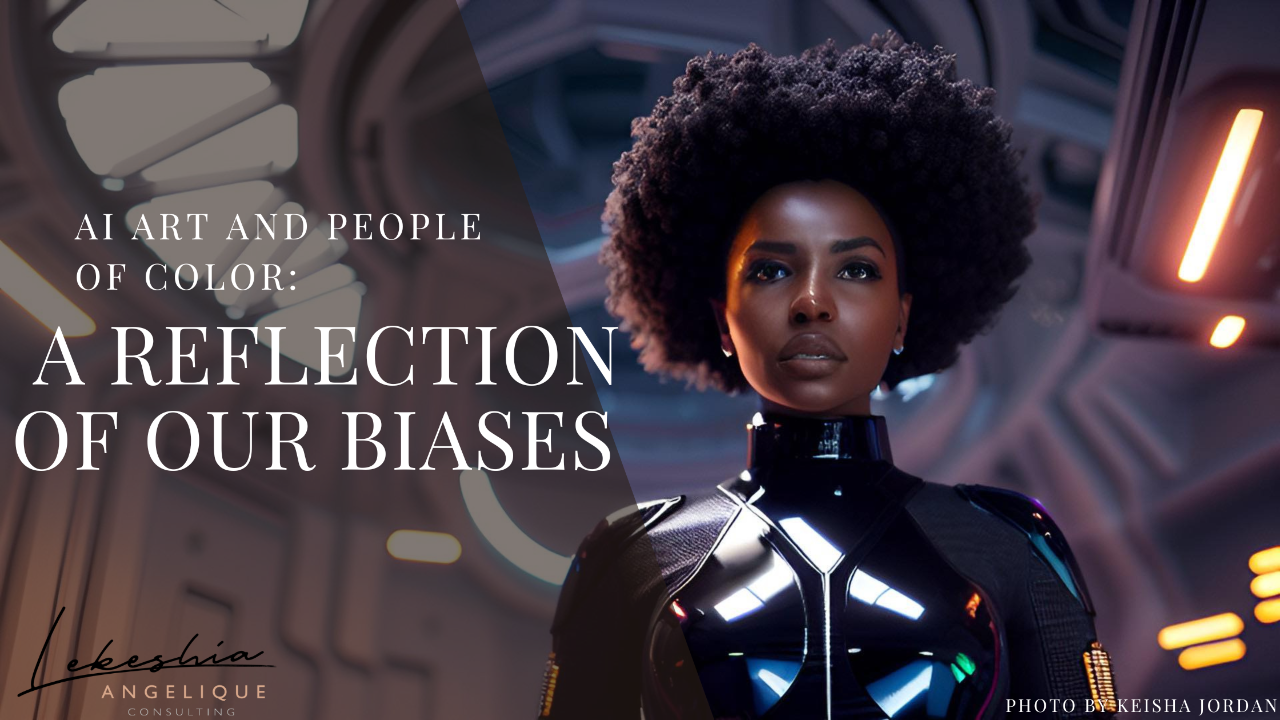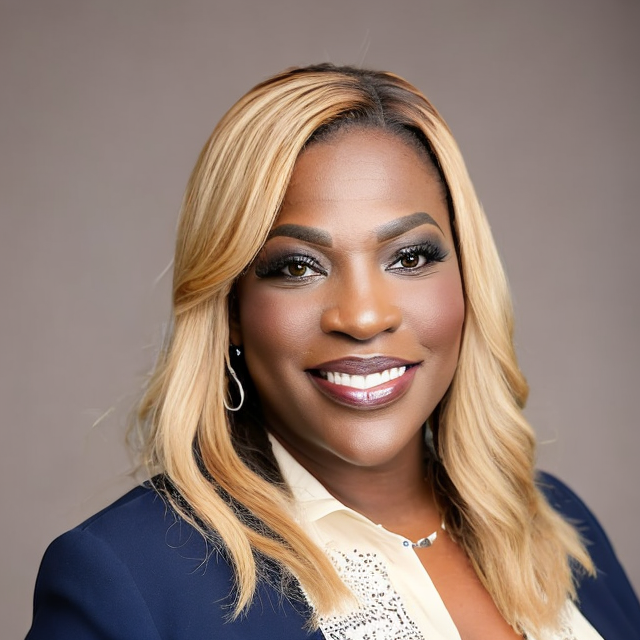AI Art and People of Color: A Reflection of Our Biases

The world of technology has a long way to go before it can be regarded as diverse and inclusive. And the recent controversy surrounding the app “Try On” is a prime example of how far we still have left to go.
What is Try On?
Try On is an app that allows users to upload a photo of themselves and try on different hairstyles and makeup looks using AI technology. Sounds harmless enough, right? Well, not quite. Especially for people of the global majority.
The Problem with Try On
Try On has a severe diversity problem. Many women of color—me included—have tried using the app only to be met with terrible images and inaccurate portrayals of what we would look like with different hairstyles and makeup looks.
The reason for this is simple: there needs to be more diversity amongst the engineers who create this technology and within the tech industry itself.

AI-generated photo of Lekeshia Angelique with blond hair
The Lack of Diversity in Tech
When you have a group of people who all look and think the same, you're bound to end up with a product that only caters to their needs and experiences. This is why we need a more diverse group of people working in tech. We need people of color, women, and individuals from different backgrounds to join the teams creating these technologies.
The Implications of AI Art
In addition to the lack of diversity in the tech industry, there's another issue with AI art worth discussing—the implications of AI art that cannot accurately capture the human form.
Anyone who has spent time creating or viewing AI-generated art can tell you that the hands are often one of the weakest parts of the image. AI also struggles to capture the intricacies of the human face, often resulting in eyes that look empty and without a soul. And let's be honest, the eyes are the windows to the soul. So, when they're not captured correctly, the whole image suffers.
This is not to say that AI art is without merit. There are certainly some impressive pieces out there that were created using AI. However, it's essential to acknowledge the limitations of the technology and point out areas for improvement.
What Can We Do?
If we don't have diversity in tech, we will continue to see these disparities and inaccuracies in AI art and other technologies. And let me tell you, it's more than just a matter of terrible images and inaccurate portrayals. AI technologies are being used increasingly in fields like criminal justice, healthcare, and education. If these technologies are biased or inaccurate, they can have severe consequences for people and their livelihoods.
So, what can we do about this? Well, for starters, we need to demand more diversity in tech. We must call out companies like Try On and products that perpetuate these disparities. And we need to support and uplift women and people of color who are already in tech so that they can continue to pave the way for others.
Supporting Women of Color in AI Art
Supporting women of color who are in the field of AI art is another way we can ensure the diversity of people is uniquely captured. Take Keisha Jordan, for example, a digital art creator who has started incorporating AI in her artwork as a remedy to include more BIPOC in her work.
While AI seems like a viable option to assist in creating more inclusive art, Keisha mentions that the biggest hurdle the AI technology needs to overcome is its struggle to create BIPOC faces. Keisha further states that “this is because the people feeding the AI images are clearly feeding it mainly white images. … I don’t just create art that looks like me or people who share my same experience. I try to always think about the experiences outside of my own.”
This reiterates the importance of having a more diverse and inclusive set of people who work with AI programs and supporting women like Keisha, who are actively creating change in the tech field.
Many people, Keisha included, believe that AI is not going anywhere anytime soon. When asked how she sees AI art and tech evolving in the coming years, and what role her company will play in that evolution, Keisha states, “I see it becoming a norm in our society. A go-to really. I feel like I will definitely be someone who shows what is possible with this art. I have some ideas I’m working on that are going to push some people’s edges.”
Keisha knows that as a Black woman in the tech industry, there will continue to be many challenges. Her mindset on how to over them: “My approach has always been to just keep my head up and keep going—not allowing being the ‘outsider’ to stop me or silence me. I speak up. If I’m not heard, I speak up again and again. I refuse to have my input and wisdom dismissed.”

AI-generated Art by Keisha Jordan
The Future of AI Art
The disparities between AI-generated art and people of color—specifically women of color—are a real problem that must be addressed. As we continue to develop AI and its applications in art, we must be mindful of these limitations and work to improve them. This means improving the technology itself and ensuring that diverse perspectives are represented in the creation of AI art. Only then can we hope to create art that truly reflects the complexity and diversity of the human experience. When that reflection is distorted or incomplete, it can hurt our understanding of ourselves and each other.
We can no longer accept a world where technology is created by a homogenous group of people. It's time to demand diversity in tech and create a world where everyone is accurately represented and included.

